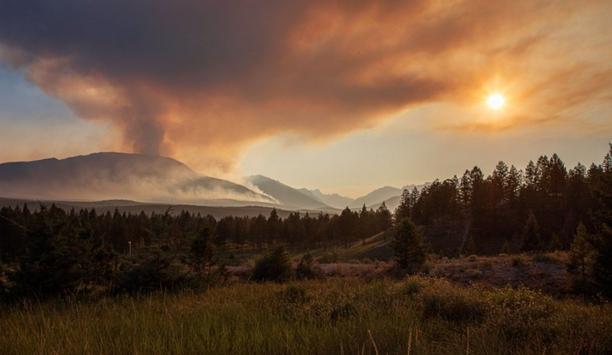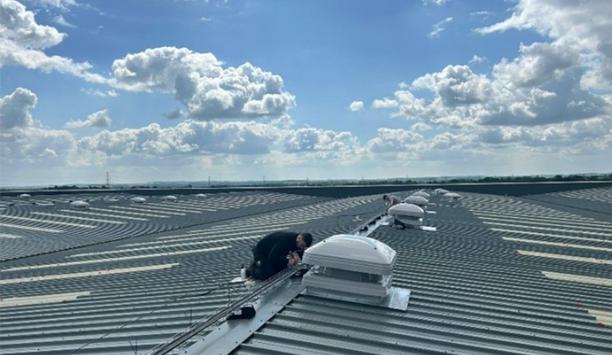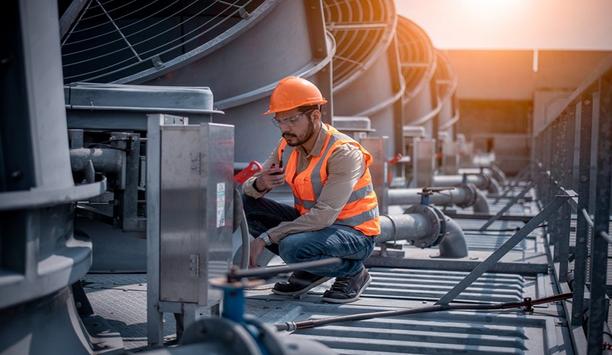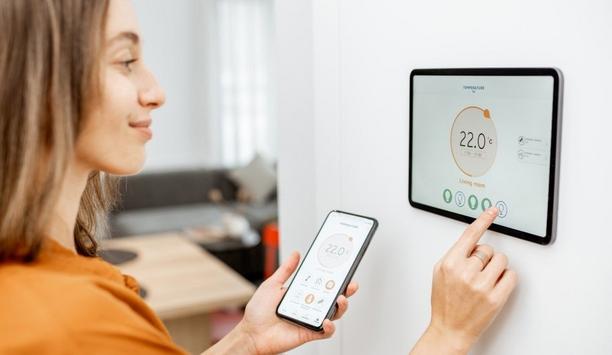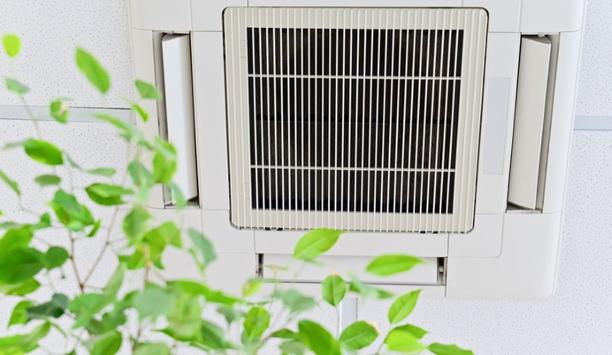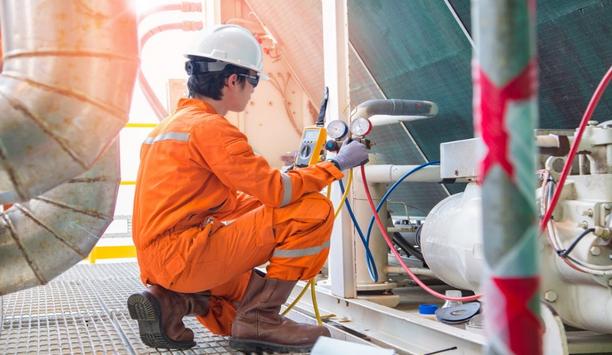International standards - Expert Commentary
Meeting a project’s overarching design goals is vital in the building and construction sector. Creating a sustainable building could be one of these goals — driven by company commitments, federal policies, and state-based initiatives. However, the priorities of minimizing capital and long-term operating costs and maintaining project timelines often prevail. Frequently, the perception in the industry is that these priorities — especially cost — are incompatible with...
The HVAC/R industry is in the process of a major shift as A2L refrigerants become the standard in residential and commercial system HVAC. This change is being propelled by stricter environmental policy and advancements in refrigeration technology. However, the transition is not without its hurdles, posing new considerations for system owners, technicians, and equipment manufacturers. Favor of GWP alternatives The Environmental Protection Agency (EPA) has established clear guidelines to phase...
It’s often said the only constant in life is change. In the HVACR industry, that phrase has been especially true. We saw another year of transitions in 2024 that included evolving efficiency and refrigerant regulations, changing corporate net zero targets, the continued emergence of advanced heat pumps, and the impact of artificial intelligence (AI) in building management. Smart and sustainable Throughout these transformations, the industry continues to overcome challenges and in...
Devastating wildfires sweep across the US each year, leaving a trail of destruction in their wake. Aside from the immediate damage that fire causes to property and land, the additional impact that wildfire smoke has on air quality creates a serious but often overlooked threat to human health. This threat from poor air quality includes people in the workplace. IAQ management As wildfires increase in frequency and intensity, facility managers must be proactive to protect occupants inside...
The HVAC market is forecasted to grow at a projected compound annual growth rate (CAGR) of 3.9%, with a prediction to reach $370 billion by 2030. But in reality, the HVAC and plumbing industry is changing rapidly, with operators facing new challenges like never before. Whether it’s rising costs, the uncertain economy, increasing competition, or the workforce shortage, there’s no doubt the HVAC and plumbing market is evolving. So how do you adapt? That’s the key question. My t...
How can UK businesses effectively tackle the challenge of cooling commercial and industrial buildings? Cooling commercial and industrial buildings can be a challenge for UK businesses. In recent years, the spiraling energy costs have put pressure on businesses with regard to finding new and innovative ways to achieve the same result with less capital outlay and less maintenance. New system installs have sometimes been put on hold and maintenance schedules squeezed, leaving many businesses with...
From temperate climates that reach mid-90 F in June and mild winters allowing people to be outdoors without jackets to the “May flowers” that bloom in early March, it’s evident that society is experiencing World Refrigeration Day’s 2024 theme: “Temperature matters.” In addition to driving climate change, global warming is driving changes in how people live and how industries adapt and innovate to support new dynamics. This is especially true for the HVACR Indu...
Advanced heating, ventilation, air-conditioning, and refrigeration (HVACR) systems have always been essential to healthcare. However, the need for clean, fresh air at the right temperature and humidity within clinical settings has never been made clearer during the COVID-19 pandemic. It illustrated the importance of effective HVACR systems in healthcare due to their ability to improve air quality, patient outcomes, and infection control measures. The need for change Many current...
Nothing is immune to entropy. As buildings age, they suffer natural breakdowns in efficiency, performance, and useability, compromising occupant comfort and leading to higher energy bills. Luckily, they do not have to stay that way. Retro-commissioning brings existing structures up to speed so they can function their best. What Is Commissioning? Commissioning helps buildings operate as the owners intended and ensures staff maintains their equipment and systems. During new construct...
Using air conditioners and electric fans to stay cool accounts for nearly 20% of the total electricity used in buildings around the world, according to a report from the International Energy Agency. hybrid work model As a unique mix of key factors, such as the adoption of the hybrid work model and escalating heatwaves in certain regions of the United States keep people indoors for longer periods, this 20% share represents an increasingly costly line item on household budgets. Those within th...
According to some recent estimates, the cooling industry accounts for approximately 10% of global carbon dioxide (CO2) emissions. To place this in perspective, the transportation sector, as the highest contributor, accounts for approximately 20% of global CO2 emissions. While some may see this as a “glass half empty” scenario, the better approach is the one taken by key players in the HVACR space. As we see it, because the cooling industry has been a source of significant emis...
Patented new filtration technology proved it can upgrade AC units and Air Curtains to become highly effective Air Purifiers. Background and problem AC Split Units and Air Curtains employ coarse dust filters that are normally installed within the housing at the air return vent to allow for frequent filter cleaning. While this vital activity is generally performed on a regular basis in professional settings, it may be overlooked in home settings, leading to the clogging of these filters. This de...
Coastal and tropical areas present their own unique challenges for business and residential HVAC units. For these machines, which we use to create comfortable, safe air for occupants, corrosion is enemy number one in high moisture environments. Due to the high level of moisture and salts in the air along the coast, HVAC solutions are more susceptible to corrosion. These salts can negatively impact unprotected coil fins and metal surfaces, causing them to corrode, which can ultimately lead to s...
With each passing year, more and more individuals are becoming conscious of the importance of sustainability. As a result, there has been a boom in the electric vehicle (EVs) market. According to the International Energy Agency, the sales of EVs doubled in 2021 with nearly 10% of global car sales being electric. Two million electric vehicles were sold in the first quarter of 2022 alone. It was estimated that 13% of new cars sold in 2022 would be electric. Gas-Powered vehicle For those who cho...
When your HVAC system isn't working correctly, it's often difficult to pinpoint the exact issue. Does your home have hot and cold spots? Do doors randomly close on their own? Is your A/C blowing warm air on a hot summer day? If so, your HVAC might have an uneven airflow. There are many symptoms of uneven airflow and many solutions. Amid the increasing demand for HVAC repair, homeowners need to learn how to keep their home system operating at its best. Understanding the potential causes of unev...
Each day we’re reading headlines about decarbonization ambitions for buildings while challenged with supporting day-to-day operational needs. Yet, we’re still tasked with delivering energy and cost reductions. Given the magnitude of energy consumption and the importance to occupant/tenant comfort, HVAC systems warrant significant attention. There are a lot of options with new equipment and controls to drive energy use down and enhance overall comfort that are very impactful, when bu...
Poor indoor air quality (IAQ) has been a longstanding problem within educational institutions, where it has been known to affect productivity and performance, as well as mental and physical health. And it’s not just the pupils at risk, with studies finding that this deleterious phenomenon can also compromise teaching performance and delivery, which inevitably affects the quality of the information received. CO2 concentrations This has recently been evidenced in a study conducted by the U...
With the UK experiencing increasingly warmer summers and more frequent heatwaves, we’re equally seeing more air conditioning units installed in both commercial and residential spaces. As the demand for air conditioning continues to increase, so too will the demand for copper pipes. Copper is a trusted and reliable material that air conditioning installers have been using for many years and, not only that, it’s also infinitely recyclable – making it a sustainable alternative to...
A preventive maintenance program could save 12-18% over reactive maintenance, as the U.S. Department of Energy predicted in 2010. For many businesses, the savings could be higher, considering the risks of downtime and today’s economic conditions pushing up costs across the supply chain. It’s also possible for a program to miss the mark. By one measure, 50% of the costs of a preventive maintenance program are often wasted. The question is, how do you know if your maintenance program...
The importance of caring for the environment has become a top priority both around the world and increasingly in the United States. As regulations and social expectations become more stringent, future-proofing our infrastructure - beginning with energy consumption in buildings - is a natural first step. There are four key strategies a building owner or facility manager can focus on to improve energy efficiency and reduce a building’s carbon footprint, all while improving building performa...
As COVID-19 becomes endemic and hybrid working becomes the norm, a great deal of time and energy is going into managing a safe return to the office and a move to new styles of working. As hard FM systems are adjusted to suit new workplace expectations and futureproof sites, Johnpaul Pearson, Business Support Director at Anabas, talks about understanding workplaces and using technology to better design and plan a workplace of the future. Even before the COVID-19 pandemic struck, we were witnessi...
Ventilation systems have never been more important as we battle against an ever-evolving pandemic, and crucially, they must be installed correctly to deliver good indoor air quality for years to come. David Millward, Group Product Manager at Elta Group, explains the practical considerations needed for contractors in charge of installing them. Good indoor air quality (IAQ) With a pandemic that has been raging for going on two years, there has never been a time where good indoor air quality (IAQ...
With COP26 behind us, the words ‘Net Zero’ still hangs heavy in the air as we look to make the most of the momentum gained by the summit. On the face of it, it’s a daunting task. However, like so many challenges in life, it becomes considerably more manageable when broken down into smaller steps. It’s now a widely accepted fact that lighting, heating, and cooling operating emissions account for a significant proportion (28%) of all carbon emissions emitted by building an...
Indoor air quality (IAQ) has never been closer to the forefront of the public mind. After all, the COVID-19 pandemic is still ongoing. The government’s scientific advisors have warned that, during the coming winter, daily hospitalizations could plausibly reach heights of 7,000 per day. And, of course, we are all thoroughly aware at this point that COVID is an airborne virus and, as such, spreads very effectively indoors – a fact which many people will have reflected on as they...
AI (Artificial Intelligence) is a smart buildings’ biggest ally. Without it, a building could hardly be classed as smart. For building owners and managers, AI is imperative to create a secure and comfortable experience for their occupants every day. What a building platform should do is gather data from various sources from the building management system and other smart technologies, to gather it all in one place. The data should then be fed into a flexible, scalable cloud-based platform...
Even though the COVID-19 pandemic is seemingly drawing to a close, living, working and learning at home is set to continue. Under this new normal, home electricity use is expected to double by 2050. Simultaneously, as climate change devastates communities around the world, we are faced with a moral and economic obligation to cut CO2 emissions from houses. Our goal is to build Net Zero houses and we can't get there fast enough. Fossil fuels use in heating systems Many countries continue to rely...
I am writing this the day after the Autumn Spending Review, which among many measures, included a huge focus on how the Government wants to ‘level up the country’, creating a new post-pandemic economy, with higher wages and higher skills. Part of this is the £500 million ‘Multiply’ scheme, which aims to increase numeracy and basic mathematics for adults in the United Kingdom via in person tutoring, digital training and flexible courses. Lack of basic skills to acce...
The development of digital technologies in the Heating, Ventilation and Air Conditioning (HVAC) sector has been transformational for the industry, as well as for those who run HVAC systems. While the electrification and digitalization of machines, and assets has made a lot of operations simpler, it has also meant that the collection of machine data has never been more critical. Given that engineers can now view lots of different metrics on a single screen, including things like heating control...
It is now more common to read about cases of Legionnaires’ disease in the media than ever before, with outbreaks regularly being reported in cities around the world, all the time. Many of these cases are attributed to contamination of domestic systems, showers and spas, but some are the result of operating cooling towers. While this problem is not new, with the first reported case in Philadelphia, in 1976, the United Kingdom (UK) has been at the forefront in leading the battle with Legionn...
At the moment, it seems as though a day rarely goes by without low-carbon heating hitting the headlines. Whether it is reports of ‘revamping’ the Clean Heat Grant, to include a ‘boiler scrappage’ scheme, which may offer home owners up to £7000 to make the switch to a low-carbon alternative, to speculation that the Prime Minister is under pressure to push back the 2035 ban on gas boilers, the debate on how and when the low-carbon heating revolution will happen is ong...
From A To L: Your A2L Transition Guide
DownloadLeveraging Radiant And Hydronics To Help Achieve Decarbonization Goals
DownloadSealed Connectors In Harsh Environments
DownloadPowering And Cooling Next Generation Data Centers
DownloadDebunking Myths To Promote A Bright Future For Heat Pumps
Download


